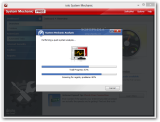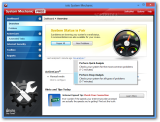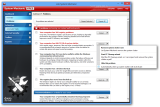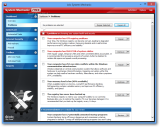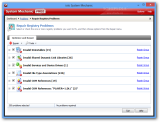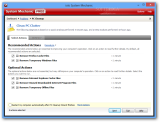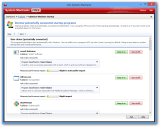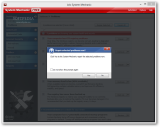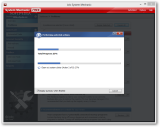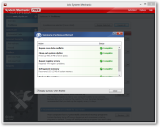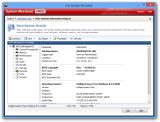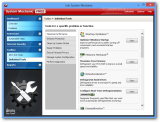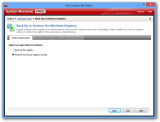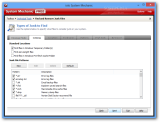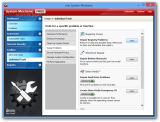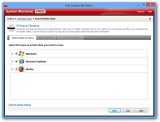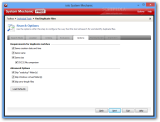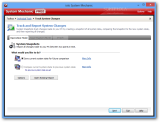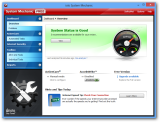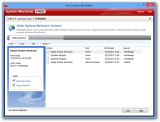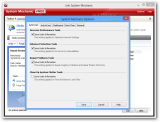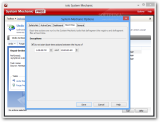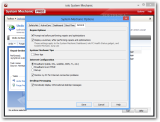System Mechanic from Iolo has always benefited from increased user attention thanks to the promise of winding back the clock on system performance.
According to the developer, the success of the optimization routines applied to a PC is based on careful examination of a wide variety of system configurations and creating definitions for detecting and removing PC performance bottlenecks and stability issues.
At the moment, there are over 36,000 such files bundled in a package called Tune-up Definitions. According to the developer, more than 10,000 of them have been added in the past year. New ones are delivered as free weekly updates.
They allow System Mechanic to adapt and apply its “magic” contextually for system configurations, even if new software or hardware is added or replaced.
System Mechanic is available as a free suite, but there is also a paid version, which features considerably more optimization tools and is regularly priced at $69.95 / 51.68 EUR, but you can get it 30% off from Softpedia.
Our tests were conducted with the free version, on Windows 8. Getting the package on the system is not complicated, but it is a lengthy procedure if you assume total control and go with the custom installation, involving registering with the company.
Looks are far from impressive; however, working with the program is at the opposite end of challenging, even for beginner users. On the other hand, the interface is filled with tools that are reserved only for the Pro version of the suite.Most of them can be spotted by the “advanced” label, but in some cases this mark is not available. Trying to access them deploys a comparison chart for the two releases, with an upgrade link to the paid product.
The Dashboard panel is the main area for initiating either a quick or a more thorough analysis of the system in search of performance slowdowns.
A quick check is advertised as a one- or two-minute process that looks for the most common issues, while the deep scan should take between five and seven minutes to complete and checks for all types of problems.
These include detecting the amount of unnecessary files, registry issues, broken links, memory level or startup items.
Newly introduced in System Mechanic 12 is Core Data Recalibrator, a tool bent on eliminating issues in Windows communication infrastructure (for software and hardware) that could lead to “false alarms, misdirected files, incorrect reports, confused software, unreliable hardware, and generally unpredictable computer behavior.”After running a quick check of the system state, System Mechanic detected 253 core data conflicts within Windows communication infrastructure.
However, there is no transparency and no list of problems is presented. You have to put your trust in Iolo’s tool that it’ll carry out with the right procedures to deliver the desired performance oomph.
Also detected were unnecessary files (consisting mainly of browser cache files and temporary data), registry problems and a broken shortcut. In the case of the last two, the items could be reviewed and with registry entries, there is the possibility to exclude them from both current and future removal routines.
Additional suggestions for an improved state included a list of potentially unwanted startup programs. Among System Mechanic recommendations were processes that contribute to maintaining system’s safety.
On our list there were Windows Search indexing process, updaters for Adobe Flash Player and Google Chrome as well as AvastSvc.exe, an item that manages and implements avast! Antivirus services (resident protection, virus chest and scheduler) for the computer.Since these are just suggestions for improving the boot time of the system, they are not automatically disabled. Furthermore, for most of them the impact on boot time is calculated.
Another piece of information to help you decide whether to keep them or not is community input, which provides the percentage of System Mechanic users that opted for removing the item or keeping it on.
Nevertheless, in some cases, such as the updaters for Google Chrome and Adobe Flash, the majority decided to remove the component.
During our tests, immediately after the initial optimization based on a quick scan, we also ran a deep analysis to check what problems were still preventing the system from running at its optimum rate.
The process seemed like a never-ending task. The progress for checking for excessive system clutter would sometimes increase by 1% at a rate of two minutes. 22 minutes into the job with the clutter scan at only 35% and a total progress of 19%, we canceled the operation.A second deep scan, this time after rebooting the test computer, completed in 16’38’’, more than twice the time advertised in the Overview panel.
On the up side, this check revealed issues that were still affecting performance: system clutter (267MB) and low memory level.
Post-improvement procedures resulted in better boot times. The average was a 20% boost, but we also recorded a 36% enhancement in the process.
As far as operations on the computer were concerned (copying, archiving, opening specific files), the before and after improvement times oscillated between the same range.
Apart from the automated optimization, System Mechanic also provides individual tools designed for specific purposes: enhancing protection, increasing performance, cleaning up clutter, registry optimization.
Some of the tools included in the bundle may seem basic, but they come with extra functionality. The uninstaller, although it runs the application’s native uninstall file, can detect programs that are not listed in the default list. In our case, though, this list contained plenty of entries available in Windows Programs and Features panel.On the other hand, this special feature provides options for manual removal of the item that define the thoroughness of the job: looks for related files and folders, associated shortcuts, registry entries or configuration files.
The default action of the duplicate finder targets the system drive, and it will detect plenty of duplicate files that should generally stay on the system because they are resources for multiple programs.
However, initiating a custom search can be an efficient way to remove the doubles anywhere on the disk; and the detection options include enabling file comparison (CRC32).
Additional components available in System Mechanic include a system information scanner that offers a pervasive view over the hardware components of the computer and their properties.
The GoodThe package provides a wide range of tools that can keep the system free of unnecessary files or data accumulated from browsing sessions with Internet Explorer and Mozilla Firefox.
It can run automatic actions based on detections during quick and deep analysis of the system. SafetyNet component enables restoration of the data removed via various optimization routines (broken shortcuts, registry improvements, system clutter elimination).
The Bad
The Truth
We did not notice significant improvements, but it can help claim free space and thin down the list of startup items or check the hardware components available on the system.
NOTE
UPDATE: All 2000 keys have been claimed.
GIVEAWAY OVER 14 DAY TRIAL //
14 DAY TRIAL // 